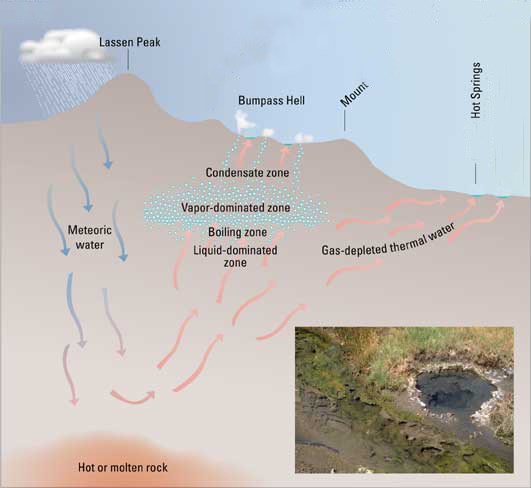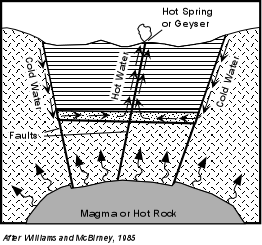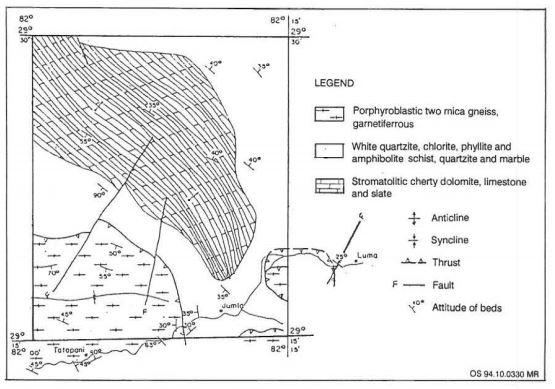Hot springs

Hot springs are also called thermal springs - theese contains water, which has higher temperature than the air of the surrounding region. Most hot springs are heated by shallow intrusions of magma (molten rock) in volcanic areas. There are also some thermal springs, which are not related with volcanic activity. In such cases, the water is heated by convective circulation: groundwater percolating downward, reaches depths of a kilometre or more where the temperature of rocks is high because of the normal temperature gradient of the Earth’s crust—about 30 °C (54 °F) per kilometre in the first 10 km (6 miles).

Types of Mineral spring:
Lithia springs contained lithium salts.
Chalybeate springs contained salts of iron.
Alum springs contained alum.
Sulfur springs contained hydrogen sulfide gas (see also fumeroles).
Salt (saline) springs contained salts of calcium, magnesium or sodium.
Alkaline springs contained an alkali.
Calcic springs contained lime (calcium hydroxide).
Thermal (hot) springs could contain a high concentration of various minerals.
Soda springs contained carbon dioxide gas (soda water).
Radioactive springs contain traces of radioactive substances such as radium or uranium.
Hot springs at Tatopani are those areas where hot water comes to the surface of the Earth, cool groundwater moves downward and is heated by a body of magma or hot rock and than, finaly, the hot water is finding its way back to the surface. You can find here some minerals, which dissolve in the high temperature water and are often precipitated when the water cools at the surface. This produces spectacular deposits of travertine (chemically precipitated calcite, or siliceous sinter).
Tatopani thermal spring – this schema shows a geological map of the Tatopani area:

The thermal springs in the Jumia district occur mainly in two places - Tila Nadi and Dhanchauri. Tatopani area shows a vertical geological section along Tila Nadi of Jumla. There are seven closely located hot springs on the right bank of Tila Nadi, below the Tatopani village. Gas seepage occurs in some of them in recent deposits of gravel and boulders with sandy - silty clay. Mini-folds and micro-faults can be observed along the Tila Nadi valley indicating the neotectonic activity. Two seepages occur at the fract and joints in the calcareous marble. The joints strike north-south and they dip west or east steeply.
https://en.wikipedia.org/wiki/Mineral_spring
https://www.energybc.ca
http://bossnepal.com/natural-hot-spring-tatopani
http://hotsoaksofthehimalaya.blogspot.cz/2009/12/north-of-nepali-capital.html
http://ecs.com.np/features/tectonic-gifts-hot-springs-of-the-himalayas
Questions:
1) Estimate the temperature of the hot springs? What makes hot spring water so hot?
2) What do you smell? Which substance makes this specific odour?
3) How many springs can you find this area? Could there be more springs? Why?
4) Send a photo of the place (optional)